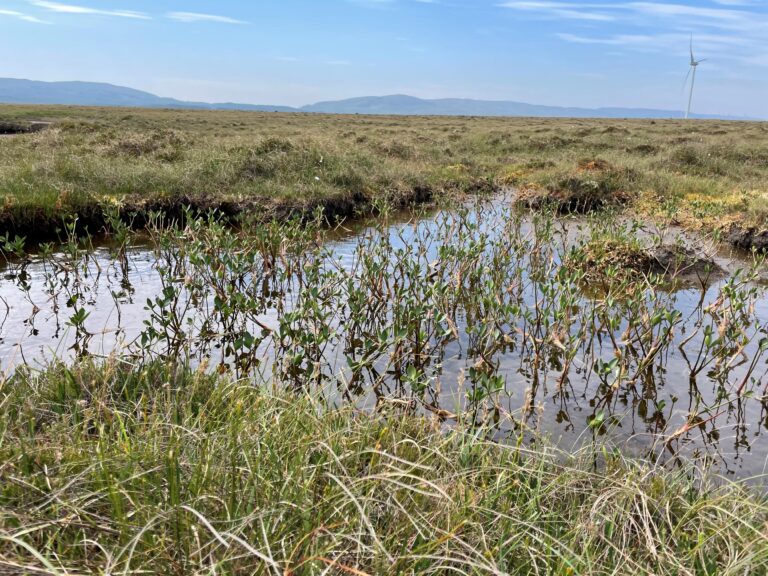Project Description
This research project will enhance our knowledge of rates of blanket peat accumulation, how these vary with physical setting and how they influence wider environmental processes across a range of scales. Findings will provide key information on rates of carbon sequestration in the past and how these compare to those in more degraded settings. Whereas much palaeoecological research has focused on raised bog deposits, blanket peat ecosystems have not received as much attention, despite covering significantly larger areas of Ireland and Great Britain. Although blanket peat covers extensive areas of upland, carbon stocks are often considered lower due to assumed shallow thickness. This is based on limited data as reflected by a subset of focused studies in areas of Northern Ireland containing, surprisingly, up to 9 meters of accumulated blanket peat. Very little is known about how this blanket peat has accumulated over time and the hydrological drivers underpinning these processes, i.e., slowly and continuously over a long period of time, versus episodic caused by downhill movements. This information is crucial for underpinning the establishment of realistic peatland restoration measures, which form a key element of strategies to combat climate change, put forward by the British and Irish governments.
This issue will investigated in this project, through sampling multiple sites with multiple cores, and utilising high-resolution radiocarbon dating together with Bayesian accumulation models. Palaeoecological records will be sampled from the cores. Accumulation rates (e.g., Blaauw in press) will be compared to hydrological processes operating in current settings with comparable physical conditions. This will include existing instrumented research test sites where QUB researchers have installed state of the art instrumentation to allow for simulation and validation of distributed hydrological models with US and Irish partners (see Flynn et al., 2021). Carbon burial and storage data will be used to assess the longer-term implications of carbon accumulation in contrasting hydrological settings. This in turn will allow for the establishment of evidence-based restoration targets. At the same time collaboration with partners in the US Ireland research programme will facilitate the development of more realistic models of catchment-scale carbon dynamics, incorporating findings with water quality and runoff data.
CANDIDATE BACKGROUND
We are looking for a numerically able student with ideally a background in ecological fieldwork and laboratory techniques. Practical experience with e.g. pollen or macrofossil analysis would be beneficial. Experience of GIS or temporal modelling would be beneficial as well. Candidates must be prepared to undertake field work in remote terrain and to work with collaborators from the USA and Republic of Ireland in multidisciplinary activities.
Photo credit: Raymond Flynn, Queen’s University Belfast
Supervisors
Ray FlynnPrimary Supervisor: | Profile: Ray Flynn Email: r.flynn@qub.ac.uk Institution: Queen's University, Belfast Department/School: School of Natural and Built Environment |
Dmitri MauquoySecondary Supervisor: | Profile: Dmitri Mauquoy Email: d.mauquoy@abdn.ac.uk Institution: University of Aberdeen Department/School: School of Geosciences |
Maarten BlaauwAdditional Supervisor: | Profile: Maarten Blaauw Email: maarten.blaauw@qub.ac.uk Institution: Queen's University, Belfast Department/School: School of Natural and Built Environment |
References
Blaauw, M. in press. 14C age-modelling. Encyclopedia of Quaternary Science 3rd Edition, Elsevier
Flynn, R., Mackin, F. and Renou-Wilson, F., 2021. Towards the quantification of blanket bog ecosystem services to water (No. 378). EPA Research Report.
QUADRAT Themes
- earth-systems






















































